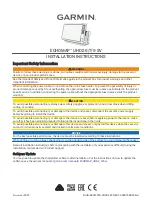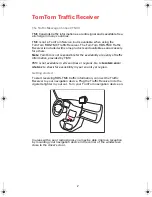
LMU-2x20™ Hardware and Installation Guide
V1.0.10
December 12, 2010
Copyright ©Calamp Wireless Networks Inc 2010
- 9 -
CalAmp Proprietary & Confidential
2.3
Wireless Data Primer
This section is meant to give an overview of the wireless data technologies employed by the
CalAmp LMU-2x30™.
2.3.1
SMS (Short Message Service)
“The Short Message Service (SMS) is the ability to send and receive text messages to and
from mobile telephones. The text can comprise of words or numbers or an alphanumeric
combination. SMS was created as part of the GSM Phase 1 standard.”
1
SMS message are typically text based, though binary messages are possible and can range in
size from 140 characters to 256 characters depending on the network being used.
2.3.2
GPRS (General Packet Radio Service)
“The General Packet Radio Service (GPRS) is a new non-voice value-added service that
allows information to be sent and received across a GSM mobile telephone network. It
supplements today's Circuit Switched Data and Short Message Service. GPRS is NOT
related to GPS (the Global Positioning System), a similar acronym that is often used in
mobile contexts.
”
2
GPRS is being deployed in its initial stages in approximately 52 countries around the world.
Keep in mind that GSM frequencies change depending on your geographic location. In
Europe, GSM sits in both the 900Mhz and 1.8GHz bands. In North America it sits in the
1.9GHz and 850 MHz bands. This means, that in order to roam with your GSM/GPRS
mobile between countries, it needs to be able to operate on multiple frequencies. The LMU-
2x30™ offers quad-band (850/900/1800/1900 MHz) capabilities to support networks
worldwide.
1
Excerpt taken from the GSM World website (http://www.gsmworld.com/technology/sms/intro.shtml#1)
2
Excerpt taken from the GSM World website (http://www.gsmworld.com/technology/gprs.html)
















































